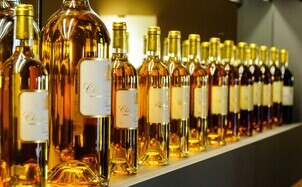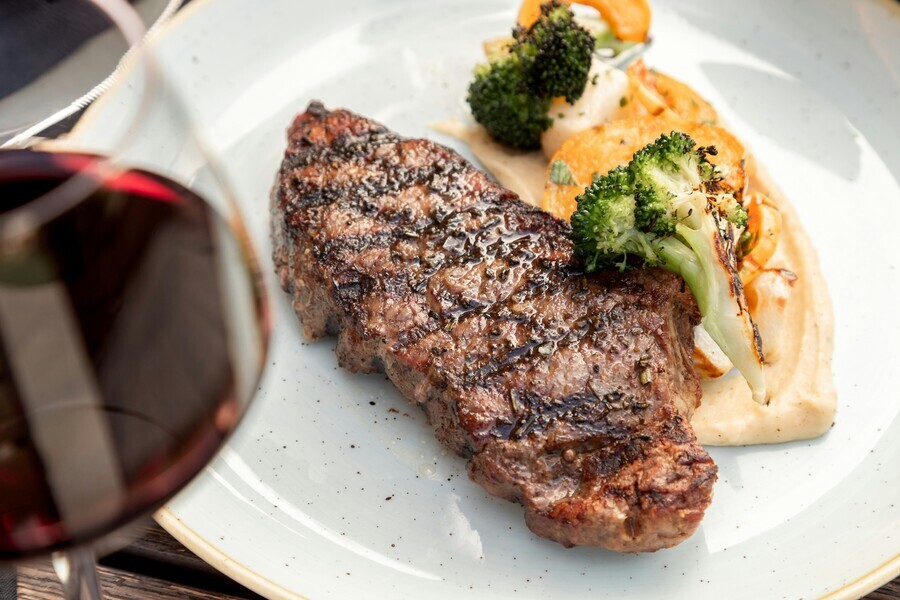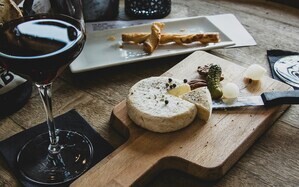
Best Meat and Wine Pairings

If there’s one season that is truly ‘meat season’, it must be autumn. When cooling days, lengthening evenings and longer nights provoke a deeper, Cro Magnon-level of carnivorous appetite from within. When warming stews, hearty roasts and robust sauces occupy an expanding share of dinner table real estate.
Of course, where there’s meat, there must be wine. The right wine, and much of it. Hence this guide. Fancy garlic and rosemary-stuffed leg of lamb, classic roast chicken or luxurious beef goulash? Pan-fried duck breast, slow-cooked pork shoulder an inch-thick, seared sirloin? Read on to ensure that what you uncork alongside maximises your gastronomic pleasure.
We’ll start with the birds.
What Wine Goes With Duck?
While lighter game birds like quail, partridge, and pheasant pair beautifully with youthful, cherry-fruited reds like Beaujolais or red Burgundy, darker, richer meats like duck, goose, and pigeon, opt for fuller-bodied reds with balancing acidity: riper Pinot Noir (Gevrey-Chambertin or Californian), Right Bank Bordeaux, or rich Cabernet Franc. Italian reds like Barbera, Amarone, or Sangiovese-based wines also shine, standing up to the deeper flavours and fattiness of these meats.
- Pinot Noir: The go-to classic—earthy, savoury and red-fruited to complement duck’s richness.
- Merlot (Right Bank Bordeaux): Smooth, plummy and rounded, great with pheasant or partridge, especially in sauces.
- Syrah (Northern Rhône): Its pepper and dark fruit stand up to gamey, roast duck.
- Zinfandel: Fruit-forward and spicy, Zinfandel works especially well with duck breast and berry sauces.
What Wine Goes With Chicken?
That’s easy. Because chicken is incredibly versatile with wine. While white wines like ripe Chardonnay (from Mâcon, South Africa or Argentina) are classic with roast chicken, reds can be just as rewarding—Merlot, especially from Right Bank Bordeaux, pairs beautifully. Herb-driven recipes (think tarragon) suit aromatic whites like Viognier, Pinot Gris or Alsace Riesling. Add gravy, and the dish leans toward reds: soft, fruity styles like Beaujolais, Pinot Noir, Valpolicella or Chianti all offer enough freshness and gentle structure to match chicken’s flavour and texture.
- Chardonnay (lightly oaked): Versatile with roast chicken or turkey—especially with creamy or buttery accompaniments.
- Pinot Noir: Red-fruited and soft, Pinot complements the subtle gaminess of poultry without overpowering it.
- Viognier / Côtes du Rhône Blanc: With aromatics, stone-fruity, bitter, spicy, nutty flavours and gentle texture, it suits spiced or herbed chicken dishes.
- Côtes du Rhône (Grenache-Syrah blend): With roast chicken or turkey legs, its warmth and peppery fruit are a natural fit.
What Wine Goes With Pork?
Pork’s richness and fat content call for wines with acidity and structure—making Italian reds like Sangiovese (Chianti, Brunello) or Nebbiolo-based Barolo and Barbaresco ideal partners, especially with roast or grilled pork seasoned with herbs. Southern French reds, particularly Grenache-based blends from the Languedoc, also shine thanks to their herbal, earthy character. Yet pork isn’t just for reds: Alsatian whites like Riesling, Pinot Blanc or Gewurztraminer pair beautifully with pork sausages or charcuterie, while a well-rounded Mâcon Chardonnay also works wonderfully.
- Riesling (off-dry): Ideal with pork belly or glazed ham—the acidity and slight sweetness balance the fat and salt.
- Grenache (or GSM blends): Juicy, red-fruited and smooth—great with pork chops, sausages or tenderloin.
- Chenin Blanc (medium-dry): Excellent with pork cooked with apples or honey—mirrors fruit and acidity.
- Tempranillo (Rioja Crianza): With roast pork or cured versions, its red fruit and spice shine.
What Wine Goes With Beef?
A no-brainer if ever there were one. Whether grilled steaks, roast of, burgers, braised, stewed, generous, full-bodied red wine is for beef and vice versa. So, without further ado: good red Bordeaux (Left Bank, Right Bank – any bank), malbec or cabernet from Mendoza, cabernet sauvignon full stop, Rhône reds, Languedoc reds, Rioja, syrah/shiraz.
- Cabernet Sauvignon: Bold tannins and blackcurrant depth match steak, roast beef or braised dishes.
- Malbec: Rich and plush—perfect for grilled or barbecued beef.
- Syrah/Shiraz: Black fruit and pepper notes make it a go-to for beef stew, burgers or prime rib.
- Chianti Classico: Sangiovese’s acidity and grip match leaner cuts, beef ragu, or Bolognese.
However, if you're wondering more specifically...
What Wine Goes With Steak?
...then here's an excerpt from a more circumspect blog we published a little while back:
The combination of a tender beef steak and a bottle of ruby red is almost inseparable in fine dining. Beyond the number one rule of wine pairing: reds with reds, there’s a good reason why steak and wine go hand in hand.
As it turns out, there’s a scientific reason behind this common culinary “law”. It all comes down to compounds found in red meat and the chemicals that form in wine during fermentation.
In particular, the high tannins in red wines, which mainly come from the grape skin and seeds, as well as the wood used to make wine barrels, and the protein in beef interact with each other to create the ideal combination.
The tannin molecules in wine “soften” the fat in the steak, releasing more flavour from the meat. On the other hand the fat dulls the acidity in wine, offering a smoother taste and bringing out more of the fruit notes.
But there’s so many different types of red wine and various steak cuts, so naturally you might be wondering what wine goes with steak? In this post we’ll explore the various steak and wine combinations to help you take your steak dinner to the next level. Here at Mr Wheeler’s Wines, we help you choose better wine, so you can always rely on our expert advice on pairing wine with your meals.
So what wine goes with steak?
Cabernet Sauvignon
Cabernet Sauvignon is often referred to as the “people pleaser” of reds, so it’s a good place to start when looking for a good wine to pair with your steak dinner. A cut that pairs particularly well with a glass of deep red Cabernet is the ribeye, especially if it’s been pan seared with plenty of rosemary.
Ribeye is one of the richest steak cuts in terms of taste with lots of natural “marbling” and tenderness. The higher acidity in Cabernet Sauvignon cuts through the fatty flavours in the ribeye, providing a bit of tanginess.
Although cabernet grapes are grown all over the world, some of the best regions to try for this wine variety are Bordeaux in France, Napa Valley in California and Tuscany in Italy.
Zinfandel
A great choice for any wine lover who enjoys their reds on the sweeter side is Zinfandel.
For pairing this type of red wine, we would recommend avoiding steaks with sweet seasoning, such as brown sugar glaze or teriyaki. Instead, pair it with a spicy, zesty seasoned steak because the sweetness can help counter some of the spice. Just like with Cabernet Sauvignon, ribeye is a good steak cut to opt for, especially when it’s been grilled on a barbecue.
The best Zinfandel wines are made in New World regions, such as California, so you wouldn’t go wrong with a wine from this area.
Syrah (Shiraz)
Syrah, also known as Shiraz is one of the wine varietals that can differ in flavour depending on where the grapes are grown, which makes it a good pairing for a variety of cuts. When grown in regions with continental climate like the Rhone Valley in France, this grape variety produces a rich, peppery wine that’s high in tannins and acidity.
When served with a fatty cut, such as the ribeye, Syrah can balance the richness of the meat. However, it would work just as well with leaner and thicker steak cuts such as a brisket or sirloin.
If you’ve chosen a slow cooked brisket, then an Australian Shiraz would be perfect to bring out the smoky flavour in the meat. But if you’re having a sirloin instead, you want to go for the French variety of this wine. A French Syrah would pair particularly well with buttery sauces with plenty of herbs.
Pinot Noir
Despite being a fine red wine Pinot Noir is often paired with lighter meats, due to its lighter flavour profile. Depending on the cut, of course, the bright, berry flavour of Pinot Noir can work splendidly with steak as well.
In general, with this type of wine, you want to stay away from fatty cuts and instead go for the leanest beef you find. A fillet steak cooked rare to medium-rear with a glass of Pinot Noir is a pair that’s hard to outmatch.
Malbec
Dark and inky in colour, Malbec is rich in flavour and full of tannins. Despite this, however, its flavour profile is rather fruity with fresh notes of citrus fruits. These bold, fruity aromas make it an amazing choice to accompany leaner cuts, as all the freshness can get lost when combined with a fatty steak.
A lean flank steak, grilled and generously seasoned with salt and pepper is the perfect cut to complement the velvety texture and strong flavour of the Malbec without overshadowing it. For the best wines from this variety look no further than France.
Merlot
A bone-dry Merlot with rich fruity flavours of cherry and plum, and a chocolatey finish is best served with lean, yet tender and flavourful cuts of steak.
The winning fine-dining combination here is filet mignon served with a glass (or bottle) of ruby red Merlot, preferably from the home of this varietal - Bordeaux, France. This is a pair that works because the food and wine compliment each other, bringing out different flavours. South African Merlot blends can also work splendidly with New York strip steak.
This cut has more connective tissues, but when cooked properly it’s still tender and full of flavour.
Sangiovese
Italy’s most common wine variety and the pride of the Tuscany region, Sangiovese, expresses a versatility in flavour depending on where and how the grapes are grown. The high acidity and tannins in this wine make it a good partner for a wide variety of vegetable dishes or just about anything grilled, including steak.
Some of the best cuts to try with Sangiovese are flank and skirt steaks.
While not fully the same, these cuts are usually prepared the same way so they’re often grouped together. Due to the chewy nature of flank steaks, even when perfectly cooked, they’re rather tough.
The wine here aims to complement the beefy flavours in the rather chewy meat and take it from a daunting chore to an experience to savour.
What Wine Goes With Lamb?
No red meat highlights a red wine’s food-pairing credentials quite like lamb. Sitting flavour-wise somewhere between beef and game, lamb also brings fattier content to the table – and as any cook knows, fat equals flavour. Pair it with a red that has enough acidity and tannin to cut through that richness, and suddenly, heaven is on that table. Tannin and fat fancy each other, and on your palate, the affection is deepened. Acidity, meanwhile, keeps everything fresh and balanced. Have some more no-brainers: Rhône reds, Italian reds, syrah/shiraz, Rioja, red Bordeaux, Languedoc reds, cabernet sauvignon, pinot noir, grenache…
If you’d like to know more about wine pairing with roast lamb more specifically, check out this dedicated blog.
- Côtes du Rhône: Herbal and spicy to match lamb’s earthier flavours.
- Bordeaux (Left Bank): Cabernet-driven blends pair classically with roast or grilled lamb—especially with rosemary or garlic.
- Tempranillo (Reserva): Mellow and savoury—ideal for slow-cooked lamb or lamb with Mediterranean herbs.
- Syrah: Lamb’s fat and Syrah’s depth are a natural match, especially in grilled or braised dishes.
Game
Venison and wild boar are deeply rich, pungent meats that demand bold, structured reds—start with Rhône Syrah, Châteauneuf-du-Pape, or Côtes-du-Rhône-Villages, then move to full-bodied options like Pauillac, Saint-Émilion, Mendoza Malbec, Stellenbosch Cabernet, or a rich Rioja. These wines balance the meat’s intensity with tannin and depth. Rabbit, being more delicate, suits the reds you’d pair with robust poultry—Pinot Noir or lighter Sangiovese styles. For stews or sauces, lean on acidity: Tuscan and Northern Italian reds keep the richness lifted and the palate refreshed.
- Barolo (Nebbiolo): With venison or hare, its structure and truffle-savoury complexity shine.
- Châteauneuf-du-Pape: A rich GSM blend that pairs beautifully with bold, slow-cooked game dishes.
- Pinot Noir: A lighter, fruit-driven option for grouse, rabbit or partridge.
- Zweigelt: Austrian and approachable, with dark cherry and spice to meet game’s intensity without excess weight.
Learn more with our Wine & Food Pairing Guide
Of course, there’s much, much more beyond the realms of wine and meat pairings. If you’d like to broaden your general wine-and-cuisine-pairing prowess, check out our very informative, very handy Wine & Food Pairing Guide. With fundamental food-matching principles outlined and applied to all main categories of produce and traditions, our guide is just the thing to heighten your enjoyment of our range – FromVineyardsDirect.
-- David Adamick, FromVineyardsDirect


